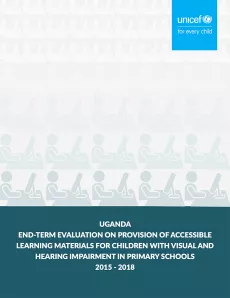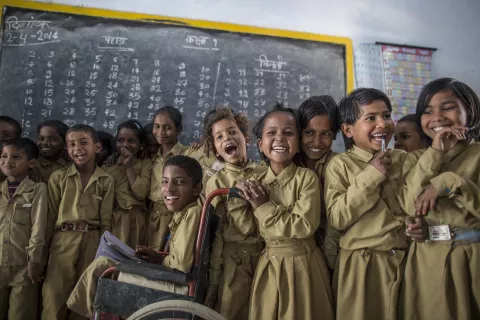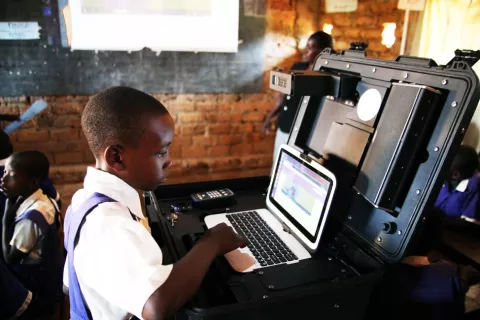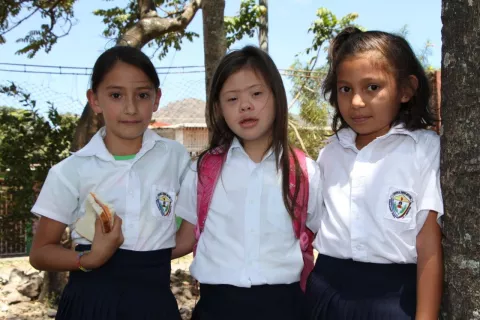Uganda evaluation on provision of accessible learning materials
For children with visual and hearing impairments in primary schools
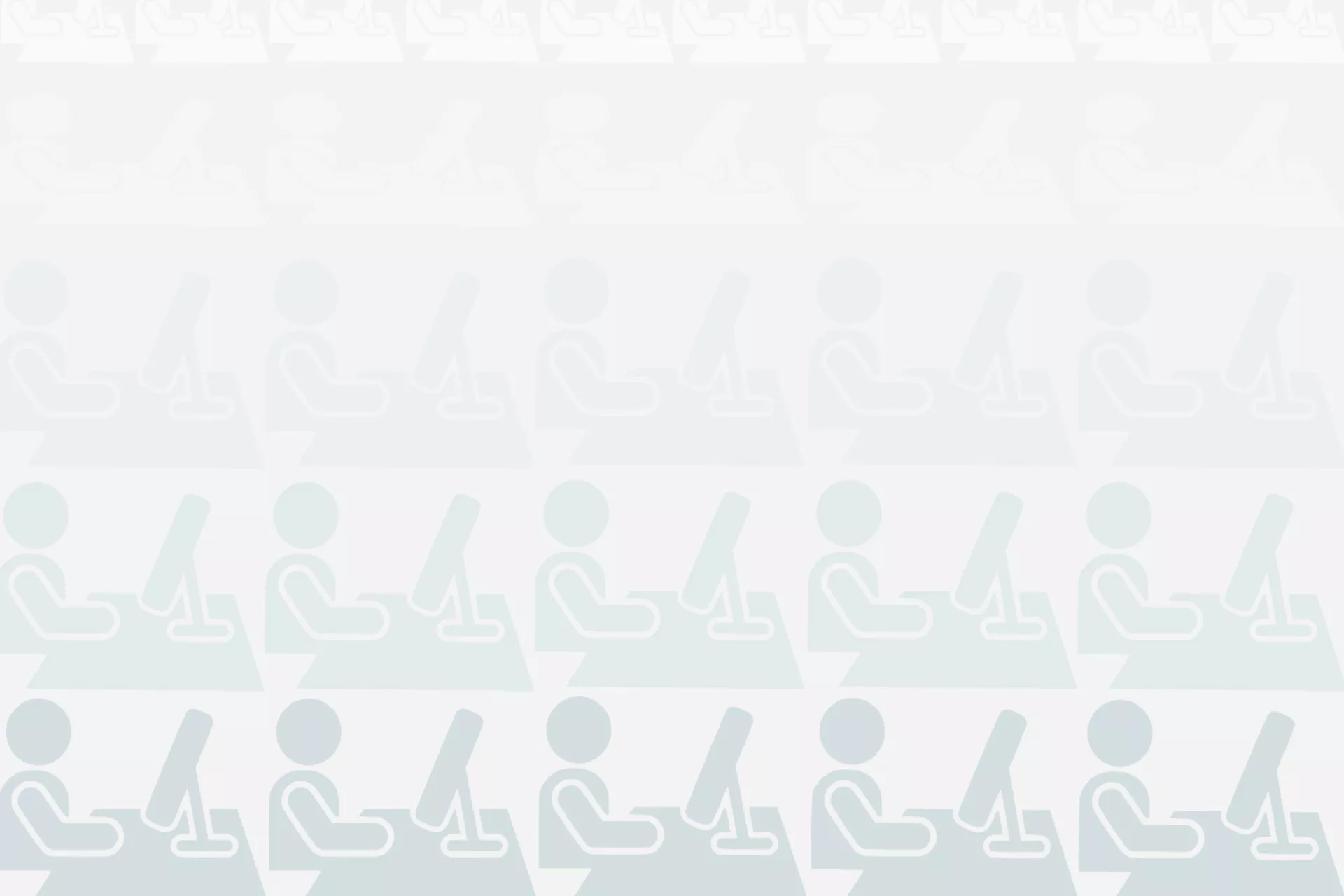
Highlights
Uganda has embraced inclusive education and is committed to improving the inclusion of children with visual and hearing impairment in education. This is evident from the country’s rich policies and the international conventions Uganda is signatory to. However, policy implementation remains weak and so there are still a number of gaps in the provision of education for children with disabilities, including those with Visual Impairment (VI) and Hearing Impairment (HI). It is, therefore, for this reason that UNICEF, together with the Government of Uganda, designed a project to provide Accessible Learning Materials for children with Visual and Hearing Impairment and address some of the gaps that exist. This report presents findings of the evaluation of this project.
The data for this evaluation was collected from eight of the 16 districts in which the project was implemented. From each district, one school was selected purposively to ensure inclusion of schools with visual and hearing-impaired learners. From each school the headteacher, teachers, Primary 4 and 6 children with visual and hearing impairment, Primary 4 and 6 children without impairment, parents, district officials, and teacher educators participated in the evaluation. In total, 173 respondents (92 males and 81 females) participated in the evaluation. Data was collected using interviews, focus group discussions, and lesson observations. In addition, documents were reviewed. Data analysis of qualitative data involved identification of themes while frequencies and percentages were derived for the quantitative data.
